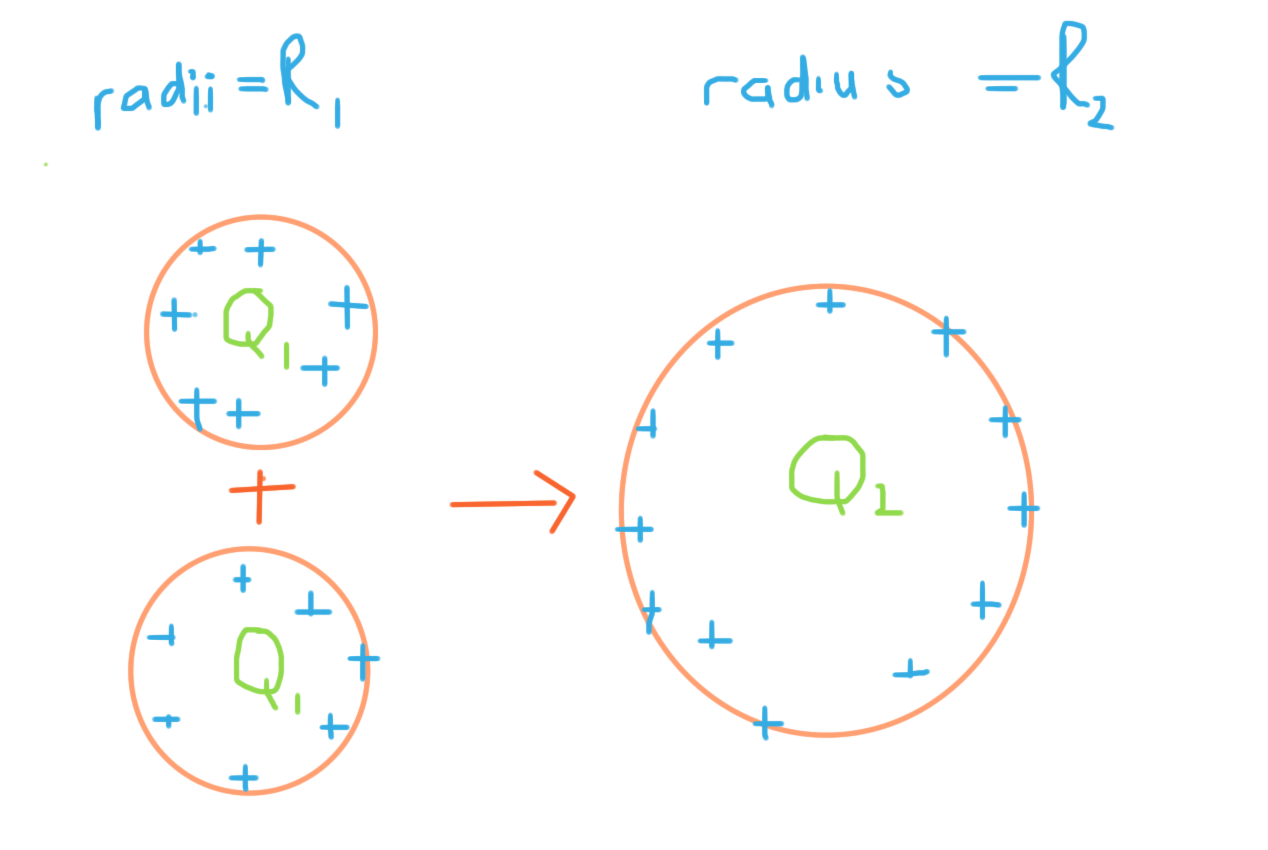Question #4b856
1 Answer

I think we have to model these as charged conducting spheres so the charges are at the surface as shown .
Gauss' Law tells us that:
And by using a concentric Gaussian sphere, we can say of a general sphere of radius
For these conducting spheres, we have 2 different situations:
-
inside the sphere,
#sum Q_(enc) = 0# so#mathbf E = mathbf 0# -
oustide the sphere,
#sum Q_(enc) = Q# so#mathbf E = ( Q)/( 4 pi epsilon_o r^2) mathbf e_r#
We connect electric field
So we get these results:
-
inside the sphere,
#mathbf E = mathbf 0 implies V = " const"# -
outside the sphere,
#sum Q_(enc) = Q# so#mathbf E = ( Q)/( 4 pi epsilon_o r^2) mathbf e_r implies V = ( Q)/( 4 pi epsilon_o r) #
Because we know
Conservation of charge tells us that
So we can say that:

